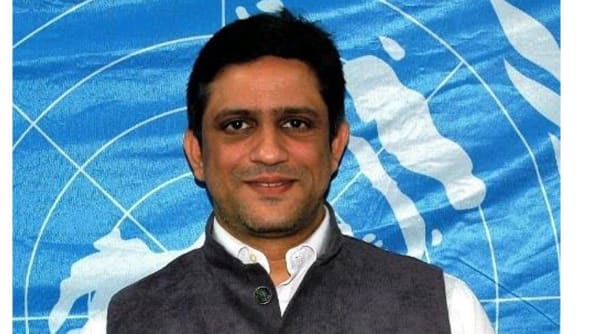Non-communicable diseases now strike earlier in India — with obesity, diabetes, and hypertension emerging in children and teens. Without early prevention and stronger child-focused care, India’s demographic dividend risks turning into a growing health burden.

Dr. Vivek Virendra Singh, Chief of Health (ad interim), UNICEF India
The real concern: NCDs now begin much earlier in life.
Non-communicable diseases (NCDs) already account for over two-thirds of all deaths in India, with nearly one in four of these deaths occurring prematurely between ages 30 and 70. While this burden is staggering, what is especially worrying is that NCDs are increasingly beginning much earlier in life. Conditions once considered “adult” problems—type 1 diabetes, congenital heart disease, pediatric cancers, and asthma—already affect large numbers of children. Even adolescents are being diagnosed with obesity, hypertension, and early-onset type-2 diabetes, which are now being detected in adolescents through school and community health programs.
What patterns are evident ?
The trend is unmistakable. 12.5M children aged 5–19 were overweight in 2022, compared to just 0.4M in 1990. In 2022, about 12.5 million children aged 5–19 were overweight, up from just 0.4 million in 1990. Among under-five children, overweight prevalence more than doubled from 1.5% in 2005–06 to 3.4% in 2019–21. Among adolescents, overweight and obesity rose sharply: in girls from 2.4% to 5.4% and in boys from 1.7% to 6.6% over the same interval. Physical inactivity compounds this risk—nearly three in four adolescents (11–17 years) fail to achieve the minimum 60 minutes of daily activity. Screen time is surging—under-fives average 2.2 hours daily, double the limit; even infants face over an hour a day. Screen time is surging too, with children under five averaging 2.2 hours/day, double the recommended limit, and even infants (0–2 years) exposed to more than an hour daily.
Excessive sedentary behavior, poor diet, and early obesity are shifting the onset of NCDs into childhood—threatening to turn India’s demographic dividend into a demographic burden unless urgent action is taken.
Tell us about the Government of India’s National Program for Prevention and Control of NCD (NP-NCD).
India’s fight against non-communicable diseases has come a long way—from the National Cancer Control Programme (1975) to the National Programme for Prevention and Control of Cancer, Diabetes, Cardiovascular Diseases, and Stroke (NPCDCS, 2010), and now the National Programme for Prevention and Control of Non-Communicable Diseases (NP-NCD, 2023–2030), which takes a life-course approach and integrates prevention, screening, and care into Health & Wellness Centres. Yet, the child dimension of this epidemic remains under-addressed. Programs like the Rashtriya Bal Swasthya Karyakram (RBSK) and the School Health & Wellness Programme are already detecting obesity, hypertension, and even early-onset diabetes among children, showing that NCDs are no longer confined to adults. But severe childhood-onset conditions—type 1 diabetes, congenital heart disease, and pediatric cancers—remain underrepresented in national planning, registries, and financing. The way forward is clear: consolidate and strengthen the childhood NCD component through age-specific surveillance, school- and community-based prevention, and dedicated pediatric care pathways. Investing early will save lives, cut future costs, and protect India’s demographic dividend.
What kind of interventions are needed to reduce the rise of NCDs?
UNICEF works with the Government of India in five-year program cycles, and in the current cycle (2023–2027), we have officially placed children and NCDs as a priority. There are two clear aspects to this. First, if India wants to reduce premature mortality between ages 30 and 70, prevention cannot begin at 30. Healthy lifestyles must be promoted much earlier so that by the time young people reach adulthood, they already practice behaviors that protect them from non-communicable diseases. Second, we must promote healthier living among children today—reducing sedentary behavior, curbing junk food intake, and preventing early use of tobacco, alcohol, and other harmful substances.
Equally important are NCDs with childhood onset, such as type-1 diabetes, congenital heart disease, asthma, and pediatric cancers. These require stronger surveillance, early detection, and access to lifelong treatment and monitoring. As India has successfully reduced preventable maternal and child mortality, the system now has the capacity to extend that progress to childhood-onset NCDs. Addressing them early is not only a health imperative but also essential for protecting India’s next generation.
Empower your business. Get practical tips, market insights, and growth strategies delivered to your inbox
By continuing you agree to our Privacy Policy & Terms & Conditions
